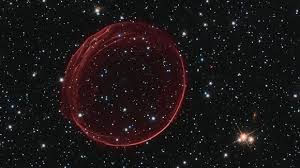QUANTUM GRAVITY: THE FINAL FRONTIER OF PHYSICS
- planck
- Aug 20
- 7 min read
Gravity is a special force. Unlike the other fundamental forces, it does not exist within a specific space-time; rather, gravity is the dynamics of space-time itself. The task of reconciling gravity with quantum mechanics is considered the "holy grail" of fundamental physics, and it is now clear that it is the most difficult and formidable task ever undertaken by fundamental physics. In this article, we will explain six fundamental keys to quantum gravity (QG). These keys will help us understand why this task is so important, why it is so difficult to solve, where we are on the path, and what real possibilities we have of achieving it.
1) Quantum gravity: the final frontier of physics
The first question is obvious: Why is it so important to find a quantum theory of gravity? There are countless experiments that demonstrate that nature is quantum at the fundamental level and that classical physics is only valid, as an approximation, at macroscopic scales. Therefore, if we want to describe gravity at the fundamental level, we must describe it according to the laws of quantum mechanics.
The second question might be: If its effects only manifest themselves at scales much smaller than those we can ever measure experimentally, can't we simply neglect them? Although it is true that in general the effects will only be important at scales close to the Planck length, there may be special situations in which quantum gravity manifests itself at much larger scales. If gravitational systems behave quantumly at the fundamental level, it should be possible to observe gravitational states in quantum superposition. This extraordinary effect would make it possible to observe the effects of quantum gravity at scales as large as those observable in current experiments. In fact, there are a whole series of experimental projects underway to try to observe this phenomenon and demonstrate the quantum nature of gravity. Other detectable effects due to the discrete nature of space-time would be the violation of Lorentz symmetry or the variation in the intensity of gravitational waves.
The third question: Why is quantum gravity the final frontier of science?
General relativity ceases to be valid when we must take into account both gravity and quantum phenomena. It is precisely under these conditions that we hope to find "the final frontier of science": the secrets of the true nature of space-time . The singularities inside black holes and the Big Bang itself, which gave rise to the Universe as we know it, can only be explained by a quantum theory of gravity.
2) The fundamental symmetry in quantum gravity
The fundamental principle underlying general relativity is the principle of invariance under diffeomorphisms. Roughly speaking, this means that two differentiable geometries are equivalent if they are topologically equivalent (they can be transformed into each other by stretching or bending them continuously, but without breaking or making holes in them). This principle has tremendous consequences for our way of seeing the world: two spacetimes, with different metrics and different geometries, are equivalent if they can be transformed into each other by diffeomorphisms. This symmetry implies the well-known equivalence between different coordinate systems of general relativity.
If we try to apply the axioms of quantum mechanics taking this fundamental symmetry into account, we encounter a serious problem: a specific coordinate system is equivalent to any other, which implies that coordinates cannot serve as a reference for the study of geometries in quantum gravity. This in itself poses a monumental problem: How are we going to make specific calculations about the positions, momenta, or energies of objects moving in space-time without using a coordinate system? This profound problem is one of the greatest obstacles to finding a quantum theory of gravity and is known through the assertion that in quantum gravity there are no local observables , only global ones.
Fortunately, physicists have found certain global observables that could be valid for doing local physics; these observables are related to the total volume, scale, or global dimensions of the system being studied.
3) More promising approaches and their possible equivalents
Until 2000, there were two fundamental approaches to quantum gravity: the covariant formulation and the canonical formulation . The first, based on the gravitational path integral, led to string theory in 1984, and the second, based on the Wheeler-deWitt equation, led to loop quantum gravity in 1989:

Starting in 2000, many physicists abandoned the canonical formulation (which is more difficult to treat in practice) and began working on covariant methods, albeit applying certain ideas from loop quantum gravity. This led to the so-called "spin foam" models. These models, although promising, still have significant problems to solve. Other approaches that emerged since 2000 are based on methods from quantum field theory. These include causal dynamical triangulation and asymptotically safe gravity .
As we will see in point 5, these last two models have allowed us to discover, near the Planck scale, a surprising characteristic of quantum gravity that, if confirmed, could be fundamental.
Despite the differences between the various GC theories, there are common concepts. These common concepts could be the key to finding the true theory of GC, so collaboration between different groups of physicists would be essential. These common ideas or concepts include: holography, the entanglement-geometry relationship, background independence, the renormalization group-scale invariance, causality, topological changes, and observables.
4) The fundamental "object" in quantum gravity
Because the covariant approximation is probably the most promising, we will focus on this formulation in this section. In this framework, the fundamental object is the so-called gravitational path integral. This "object" has the following general form:

This mathematical expression is the analogue of the Feynman path integral used in quantum field theory applied to gravity and means summing up all the contributions from all possible allowed geometries-topologies weighted by the value of their action.
The problem with this integral is that it is not well-defined; in fact, it contains serious problems that must be resolved to give it physical meaning. These problems include:
- The SEH Lagrangian density is not Gaussian and therefore cannot be defined correctly.
- The dimension of the integral is infinite so it must be renormalized without losing invariance under diffeomorphisms.
- The integral space is some quotient functional G(M) which is not a vector space and therefore it is not clear how it should be parameterized.
- It is not clear what measure D[g] should be used in the space of all geometries.
- Since this is a complex integral, it's not entirely clear how Monte Carlo methods should be applied. It's also unclear how to perform the Wick rotation.
- The Einstein-Hilbert action is divergent in its lower part. This is mainly because the factor eiSEH[G] has the wrong sign, which causes virtually all Euclidean path integrals to be ill-defined. In certain specific cases, this can be resolved by correctly defining the integration contour, but in general, this is not possible.
5) Entering the Planck scale
On old navigation maps, it was very common to draw dragons in areas that had not yet been explored. Between the smallest scale that has been explored experimentally (in the LHC collisions) and the Planck scale, there are 15 orders of magnitude (a factor of a quadrillion), which represents an immense number of possible dragons. Recent work based on random geometry (dynamical triangulations, tensor networks, and other approaches) allows us to calculate what happens to a parameter called "spectral dimension." This parameter allows us to estimate fairly accurately the "effective" dimension of a quantum system as energy increases. For example, by measuring the round-trip time of closed random walks, the overall dimension of the quantum system can be calculated because this dimension is related to the number of available degrees of freedom and therefore to the measured round-trip time. These calculations suggest something fascinating: as we approach the Planck scale, the number of dimensions of space-time decreases from 4 to 2. The basic structure of space-time would be two-dimensional!
Remarkably, this two-dimensional structure has been found near the Planck scale in various calculations using different approximations of quantum gravity: string theory, loop quantum gravity, causal dynamical triangulation, and asymptotically safe gravity. Everything seems to point to a "two-dimensional structure" at the Planck scale.
Although we still only have a few clues, if confirmed, this surprising discovery would coincide with one of the best-established expressions of semiclassical quantum gravity: the Bekenstein-Hawking equation for the microstates (entropy) of a black hole. This expression tells us that these microstates do not depend on the volume of the black hole but only on the surface of the horizon. What could be the nature of these two-dimensional elements?
6) Current situation and future prospects
While it's fair to say that we still have many problems to solve, it's also clear that our understanding of quantum gravity has made significant progress. In string theory, tools such as the AdS/CFT conjecture allow us to study gravity in a nonperturbative manner. The so-called Matrix Models allow us to analyze certain aspects of the emergence of space-time. IKKLT models based on string theory are capable of generating semi-realistic models of particle physics and reproducing certain general features of the Standard Model. In loop quantum gravity, there are models that allow us to avoid space-time singularities and thus resolve the initial Big Bang singularity, although there are still questions to be answered.
Future prospects can be analyzed at several levels:
- At a theoretical level, solve the problems discussed in sections 2 and 4.
- At the experimental level, given the impossibility of directly observing scales on the order of the Planck length, hopes are placed on projects to detect low-energy quantum gravity phenomena such as those described in section 1.
Currently, there is another very promising avenue: numerical methods. Many QG approximations allow calculations to be performed across a lattice spaced a distance "d." Using supercomputers, we can study how certain physical values of the theory behave in the limit of d tending to 0 and E tending to 0. The crucial point is that these methods are currently so advanced that physicists expect that within a few years, their results will allow us to discriminate between one or another approximation of quantum gravity and even begin to determine the observables and fundamental components of space-time itself.
Conclusions
The fusion of quantum mechanics and relativity promises to forever change our understanding of the Universe we inhabit. This change will likely be more radical than the one that occurred after the publication of general relativity in 1915. Everything indicates that the classical Universe we observe around us is actually a sum of geometries at the fundamental level. According to the vision of quantum cosmology, our observable Universe would be merely a "branch" of a global wave function with many (perhaps infinite) possibilities. Perhaps most incredible of all is that the study of the interior of black holes or the Big Bang singularity no longer belongs to metaphysics but to fundamental physics, and that the resolution of "the final frontier of physics" may be closer than we think.
Sources: Quantum Gravity in 30 Questions , Frontiers of Quantum Gravity: shared challenges, converging directions









Comments